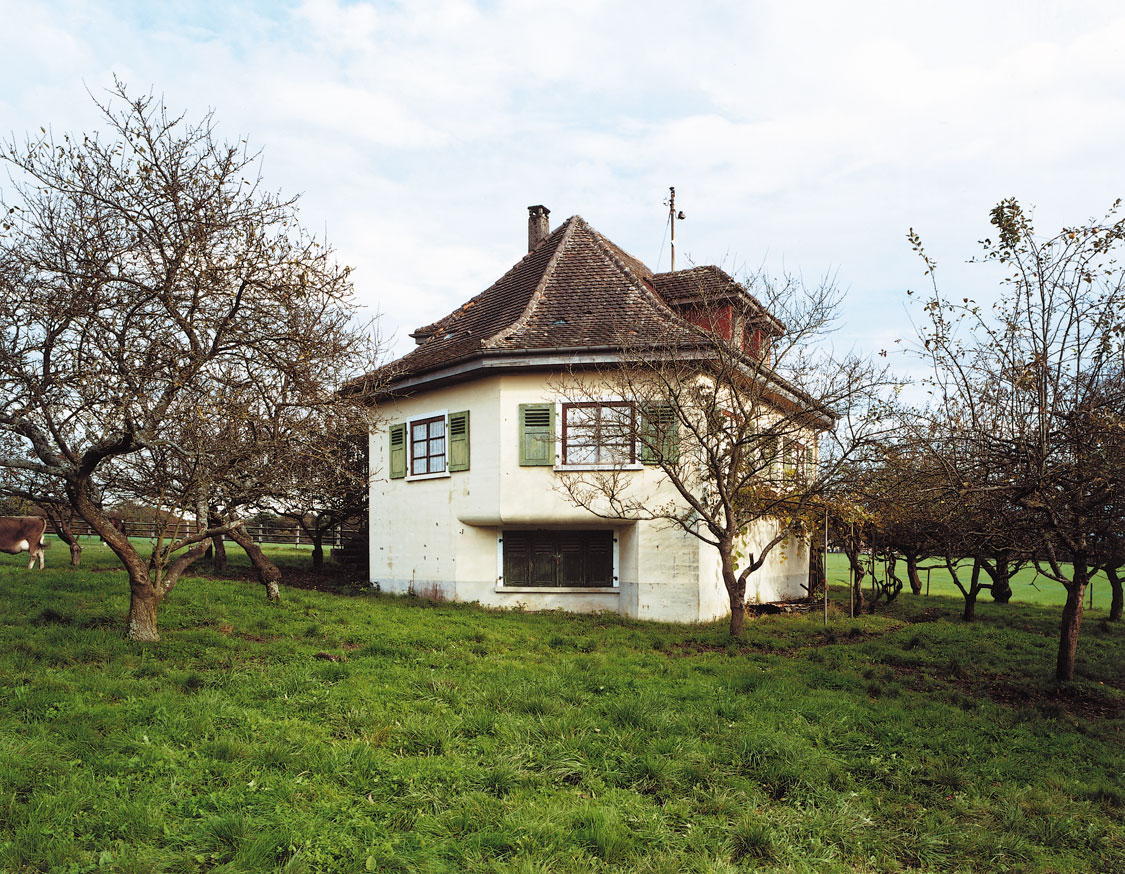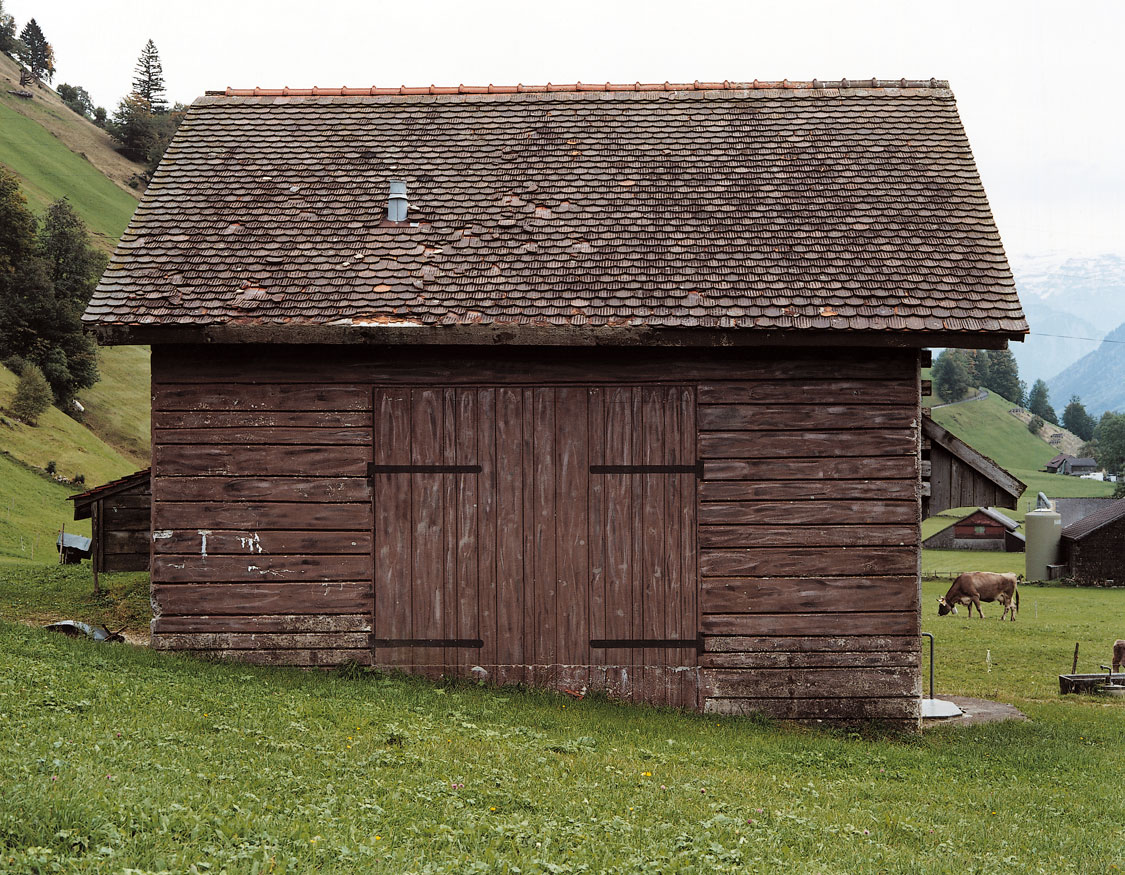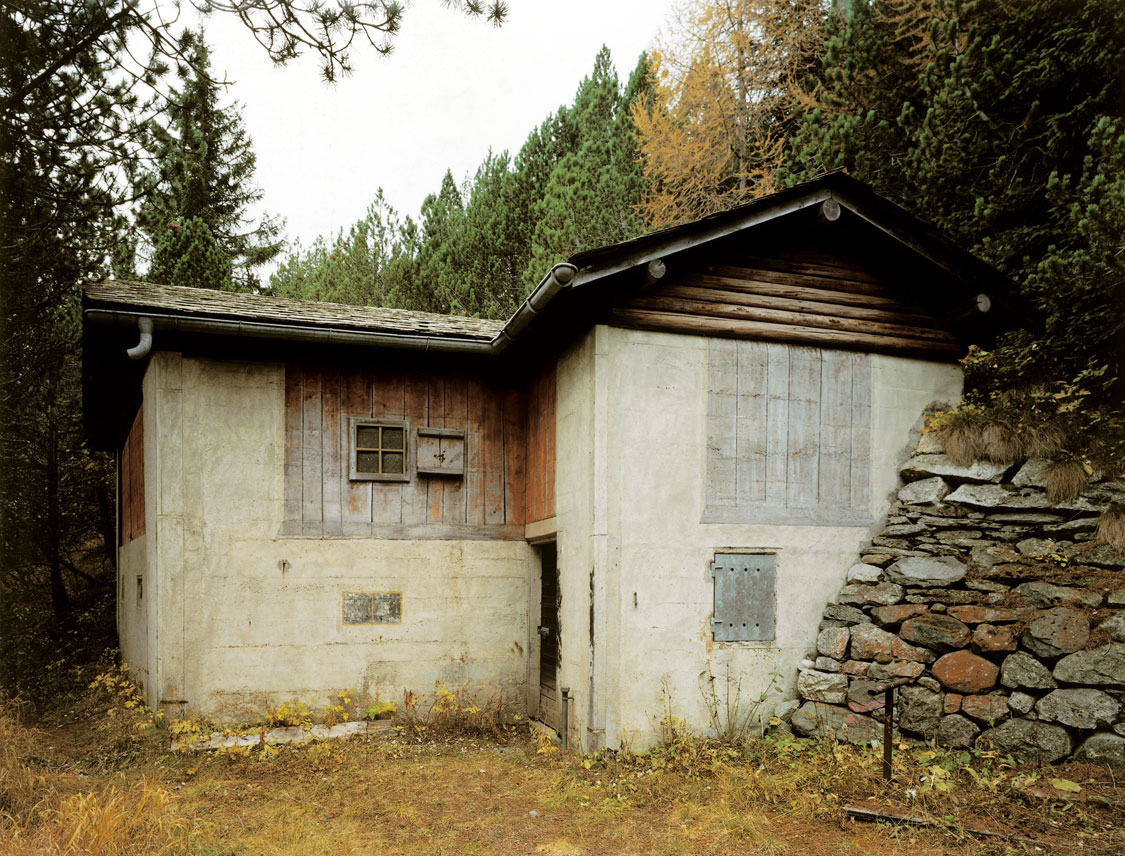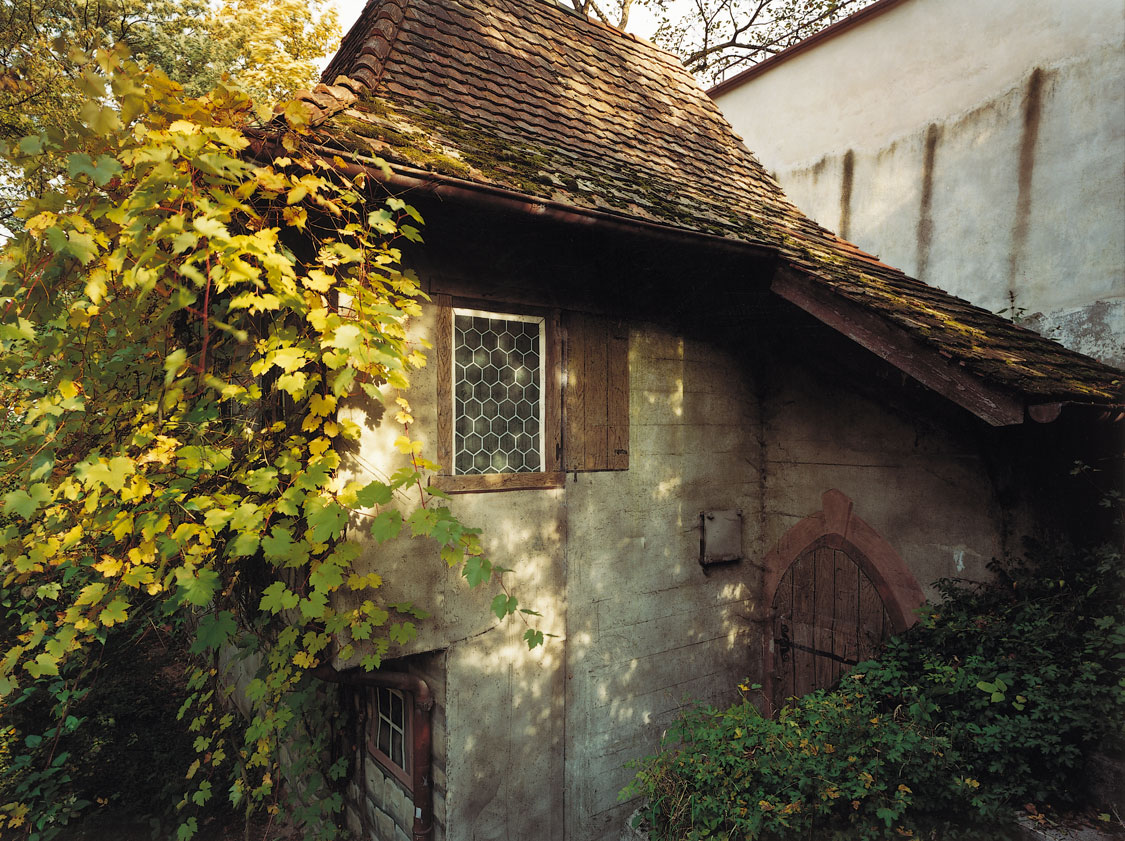Since 1999, after working as an engineer and landscape gardener and studies at Zurich’s Hochschule für Gestaltung und Kunst, Christian Schwager has devoted himself almost completely to photography and in particular photographing landscapes, forests and architectures.
The work that has made his name, Falsche Chalets, takes iconographic inventory of the Swiss military fortresses that are camouflaged as simple chalets. From 1938 to the Cold War, in accordance with the strategy of the national redoubt, the idyllic landscape of Switzerland was discreetly altered by its military forces, which riddled it with hidden caverns, reinforced-concrete bunkers, constructions beneath rock and nuclear shelters that blend into a verdant setting and to which Switzerland’s political and military forces could retreat should the land be invaded.
Schwager decided to pursue an attentive exploration of this environment, which is sown with trompe-l’oeil constructions. With chalets, barns, or villas dotting the fields, he has focused on those that are mere illusion, the result of the architectural inventiveness of an army that apes the codes of mountain dwellings and wields camouflage as a defensive weapon. These houses with their painted windows, virtual balconies, and doors that are invariably shut serve as military shelters scattered around all the regions of Switzerland that are liable to be attacked by an enemy as threatening as it is invisible.
These architectural portraits borrow the hackneyed image of a folk Switzerland whilst pointing up the obsession with security felt by a neutral country, which has fostered a bizarre creativity for protecting itself by any means.
The work that has made his name, Falsche Chalets, takes iconographic inventory of the Swiss military fortresses that are camouflaged as simple chalets. From 1938 to the Cold War, in accordance with the strategy of the national redoubt, the idyllic landscape of Switzerland was discreetly altered by its military forces, which riddled it with hidden caverns, reinforced-concrete bunkers, constructions beneath rock and nuclear shelters that blend into a verdant setting and to which Switzerland’s political and military forces could retreat should the land be invaded.
Schwager decided to pursue an attentive exploration of this environment, which is sown with trompe-l’oeil constructions. With chalets, barns, or villas dotting the fields, he has focused on those that are mere illusion, the result of the architectural inventiveness of an army that apes the codes of mountain dwellings and wields camouflage as a defensive weapon. These houses with their painted windows, virtual balconies, and doors that are invariably shut serve as military shelters scattered around all the regions of Switzerland that are liable to be attacked by an enemy as threatening as it is invisible.
These architectural portraits borrow the hackneyed image of a folk Switzerland whilst pointing up the obsession with security felt by a neutral country, which has fostered a bizarre creativity for protecting itself by any means.

















